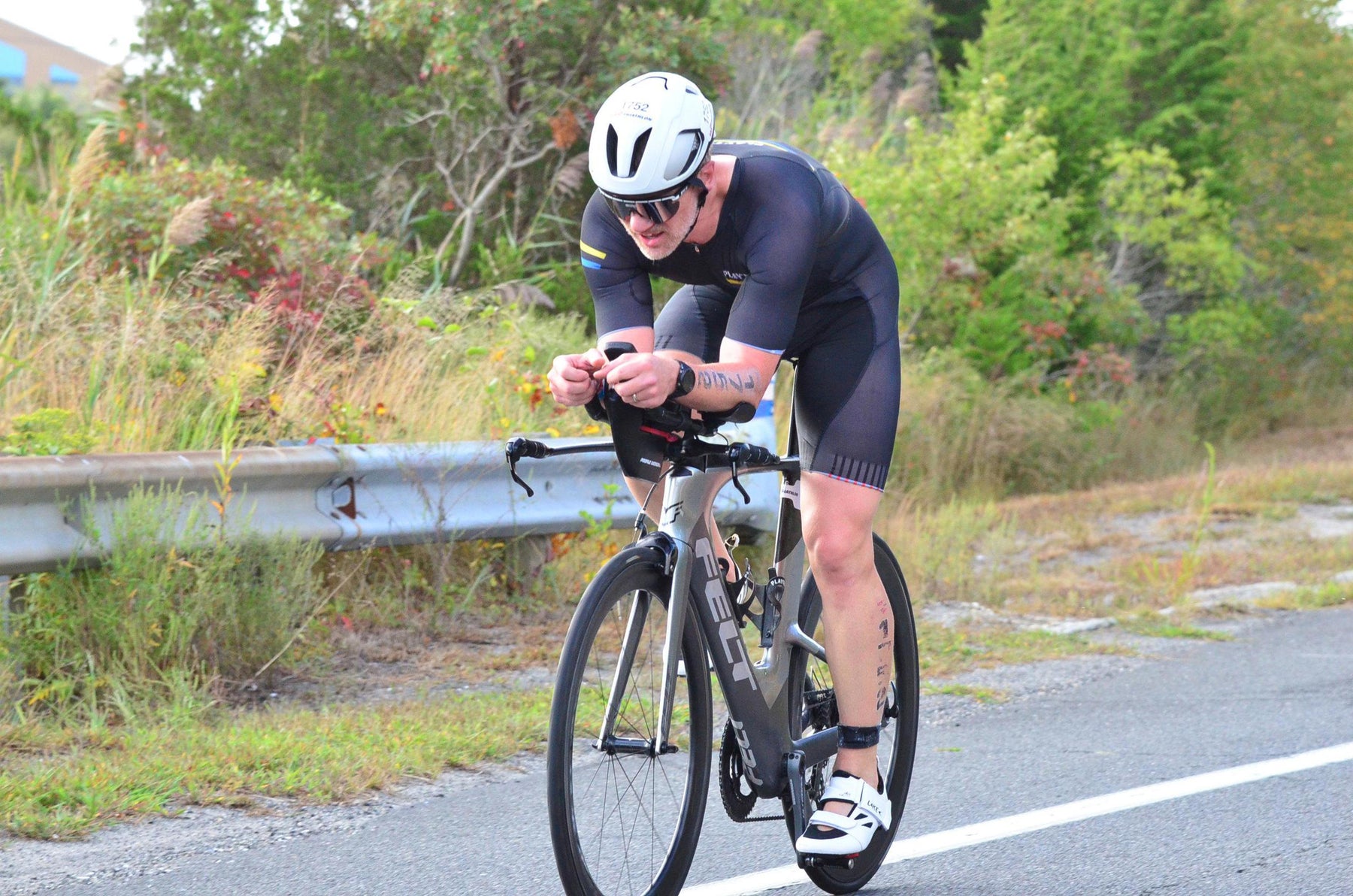
Speed vs. Durability: how to make the right equipment decision
One of the amazing things about being a coach at Playtri is the opportunity to work with athletes as they make decisions about their triathlon equipment. Playtri has a large selection of bikes, race wheels, and bike accessories, but also has an excellent selection of wetsuits, race kit, and other equipment that you need on race day.
When I work with an athlete on the topic of equipment, I like to learn about their goals and also what price range they are comfortable with. Triathlon is an amazing sport and there is an amazing amount of equipment available, and it is also important as amateur athletes to be aware of our other financial commitments and understand that the most expensive product may not be the best for us at this time. Below are some things to think about when selecting the two largest equipment expenses: wetsuit and bike.
Wetsuit speed or durability
Outside the topics of speed and durability, there are a lot of questions to consider when purchasing a wetsuit, such as: Should I go with sleeves or no sleeves? How easy is it to get off fast in transition without damaging it, especially if I am trying to get it off around a GPS watch and a timing chip? What is the warranty for the wetsuit? What are best practices for use, care, and storage of this wetsuit? These are just a few of the questions to consider.
However, if we focus solely on speed vs. durability, these are things to pay attention to:
- Higher end wetsuits will likely be faster than less expensive wetsuits as they offer more flexibility around your shoulders, thinner neoprene around the wrists and ankles to ease wetsuit removal, and also offer good buoyancy.
- Wetsuits tend to tear at the seams/transitions between thicker and thinner neoprene. Higher end wetsuits tend to have more seams/transitions between different neoprene thickness. Lower end wetsuits tend to have the same neoprene thickness throughout.
- SCS coating—the shiny coating on the outside of the wetsuit—adds a lot of durability along with speed. Although SCS coating makes the neoprene a little less stretchy, it does make it harder to tear with your fingernails, thus adding some good durability in transition.
- Yamamoto #39 & #40 neoprene is excellent in a wetsuit. #40 is a bit heavier than #39, but is stretchier. Look for either of these in a wetsuit or a combination of the two.
- Is a mid-priced wetsuit the Goldilocks wetsuit for you? Mid-priced wetsuits offer a higher quality of neoprene often times with SCS coating (something lower priced wetsuits may lack), while eschewing the flexibility of really thin rubber or fabric panels of the higher priced wetsuits.
- Try your wetsuit on before you purchase it and know the return policy. If you swim in your newly purchased wetsuit, often times mail order wetsuit companies will not allow you to return it.
- If swimming is your strongest discipline and/or you are looking to qualify to a world championship, then it may be beneficial to have the best fitting wetsuit you can buy. However, if qualification or the podium is not your goal, then go with a less expensive wetsuit and invest a bit more in your bike.
Bike speed or durability
The bike portion of a triathlon is where your gear can have a huge impact on your performance and finishing time. Because of this, the bike tends to be the place where people spend the most amount of money. When purchasing a bike it is important to considering the following:
- Bike fit. An ill fitting super bike will slow you down more than an excellent fitting mid-tier bike that you can safely and comfortably ride in the aero position. Get a fit first and buy the bike that fits you, not the bike your favorite pro triathlete rides because they are sponsored by a certain bike company.
- Considering rolling resistance. Decreasing rolling resistance with race tires and light tubes will make you faster on race day, but they are also less durable. Don’t use them for training. Have a set of training tires and a pair of race tires.
- Buy a great fitting frame then upgrade. If your goals aren’t immediate, then purchase a great fitting frame that you can upgrade over the next few years with carbon wheels, electronic shifting, and CeramicSpeed products.
- CeramicSpeed is a great upgrade for speed! Upgrade your bottom bracket, add a coated chain for race day, and then add an oversized pulley system for your rear derailleur. Although expensive, they decrease friction in your drivetrain, thus making you faster.
- Regular maintenance and cleaning. Don’t neglect regular maintenance on your bike. The bike is a huge investment and definitely worth maintaining. A well maintained and clean bike is faster than a poorly maintained, dirty bike.
If you have any questions about anything in this article or want to learn more about our different coaching options, please feel free to contact met at jim.rowe@playtri.com. Happy training and racing!
Jim Rowe is a Playtri Level 4 Coach and Coach Education Lead, a USAT LI Certified Coach, an NASM Certified Personal Trainer, and an Ironman and 70.3 World Championship Qualifier who works with adult athletes of all abilities from beginners to IRONMAN World Championship qualifiers. Learn more about Jim at www.playtri.com/jim-rowe



